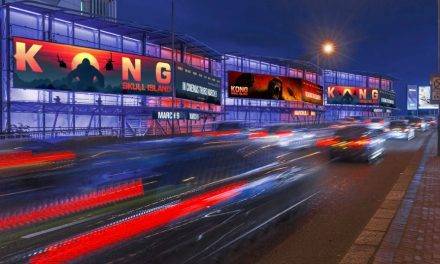Tablet, smartphone, pc and digital screens ‘on the road’ – in stores, petrol stations and public transport. Digital technology has become a staple of consumer lifestyle. At the same time, this presents a new challenge for media businesses: how do I ensure my advertisements draw attention? CSDM has developed a palette of stopping power tools and applications for this.
Quality
For many years, CSDM has been broadcasting high-quality programming via various networks – from public transport to petrol stations and schools – in various formats. As a rule, they consist of a mixture of commercials, branded content and editorial content (news & entertainment). The starting point is occasion-based here, that is to say that CSDM is in contact with and seeks contact with consumers throughout the day via its digital screens, using content geared towards time, location and target group: in public transport and at petrol stations in the morning, in companies, schools and supermarkets in the afternoon and in gyms and sports clubs in the evening, among other places.
CSDM places high demands on the content in order to guarantee the attention value and therefore the reach of the screens. For the production and development of this dynamic content, CSDM uses conventions emerging from international research (eye tracking).
Appreciation
For example, there appears to be a causal relationship between how consumers value content and the way in which content sticks: the more content ‘grabs’ viewers (stopping power) or informs, inspires, entices and so on, the longer and more deeply the commercials will nestle in the short and even long-term memory, as is evident from German neurological research. ‘The study showed that neuro activation in the beholder’s brain can be significantly increased if the advertisement is appropriately placed within a suitable programme of editorial content.’
The ‘substantive weight’ as well as the so-called ‘conversation value’ are furthermore proven success factors. Content is considered to be much more than a ‘entertainment dwell time’ alone, and is indeed increasingly regarded as a serious news and information source, and is therefore competing with other (digital) media. This does actually depend on the current character of content (the more current, the more impact), the ‘conversation value’ (the more relevant for a target group, the higher the attention value) and the way in which it is programmed.
‘If I see the same thing appearing 10 times I will lose interest’, a viewer at Beurs subway station in Rotterdam once told a CSDM editor. ‘Fortunately this is not the case here, so I keep watching.’
Innovation
Finally, when increasing the attention value, CSDM frequently uses new technology, where an integrated approach to various media and applications is increasingly opted for – think of, among other things, social media, face recognition and augmented reality (games). In CSDM’s ‘stopping power’ strategy, (social) interaction in widely differing forms plays a key role. It is for good reason experts such as Neil Morris (Grand Visual) point to the effectiveness of interactive content marketing.
Neil Morris: ‘Sometimes I see things appearing on DOOH screens which are “over the top”. I understand this choice. You want to use DOOH to capture the attention of as many passers-by as possible, even if these passers-by are preoccupied with something else, with their smartphone for example. But if you drown yourself out, you may destroy your own campaign and a DOOH screen. The damage caused by bad content or content that is too aggressive is really enormous.
Interactive content, whether it is commercial or editorial, can be used to get even closer to consumers, at least if you do it well. It should be done in a pleasant, current and useful way. You have to make people curious. So try to be sympathetic, engaging and surprising. Be part of the daily discussion such as it takes place on social media, or challenge them to do something or let them win something. Do not fire messages that are devoid of fantasy. Once the Facebook generation sees pushy content on a screen that moreover does not add anything, you will not get a second chance. They will stop looking, however many beautiful things you have programmed on the front-end or back-end. They have plenty of alternatives.’
Approach
CSDM has often implemented this interactive approach in a playful (‘gamification’ and ‘gesture-based’), creative and distinctive way in practice. For example, in the Rembrandt spectacular for KNP it was possible to have yourself drawn in the style of the great artist. Or what do you think about swiping your own kitchen, flying a plane to your favourite winter sport destination, or shooting penalties in a real stadium (augmented reality)? Using interactive shelter displays fitted with Kinetic cameras, CSDM enables consumers to experience brands and campaigns live, which adds an effective, new dimension to Out of Home.
The ‘stopping power’ of these applications is additionally enhanced when connected to mobile. What could be more fun than making a selfie with your favourite DJ via a screen, after which you share it on other platforms? But interaction with smartphones offers more options that are specifically geared towards the target group and even personalised. Using special tools, live feeds may be pushed, which include current content about sports matches, events and other trending topics. Promotional content including discounts (last minutes) and personal buying advice may also be broadcast in this way as well. Of course, this is a selection of the tools that may already be deployed at this point. The Studio and Development departments are continually looking for new, innovative applications under the motto ‘The Future is The Beginning’.





